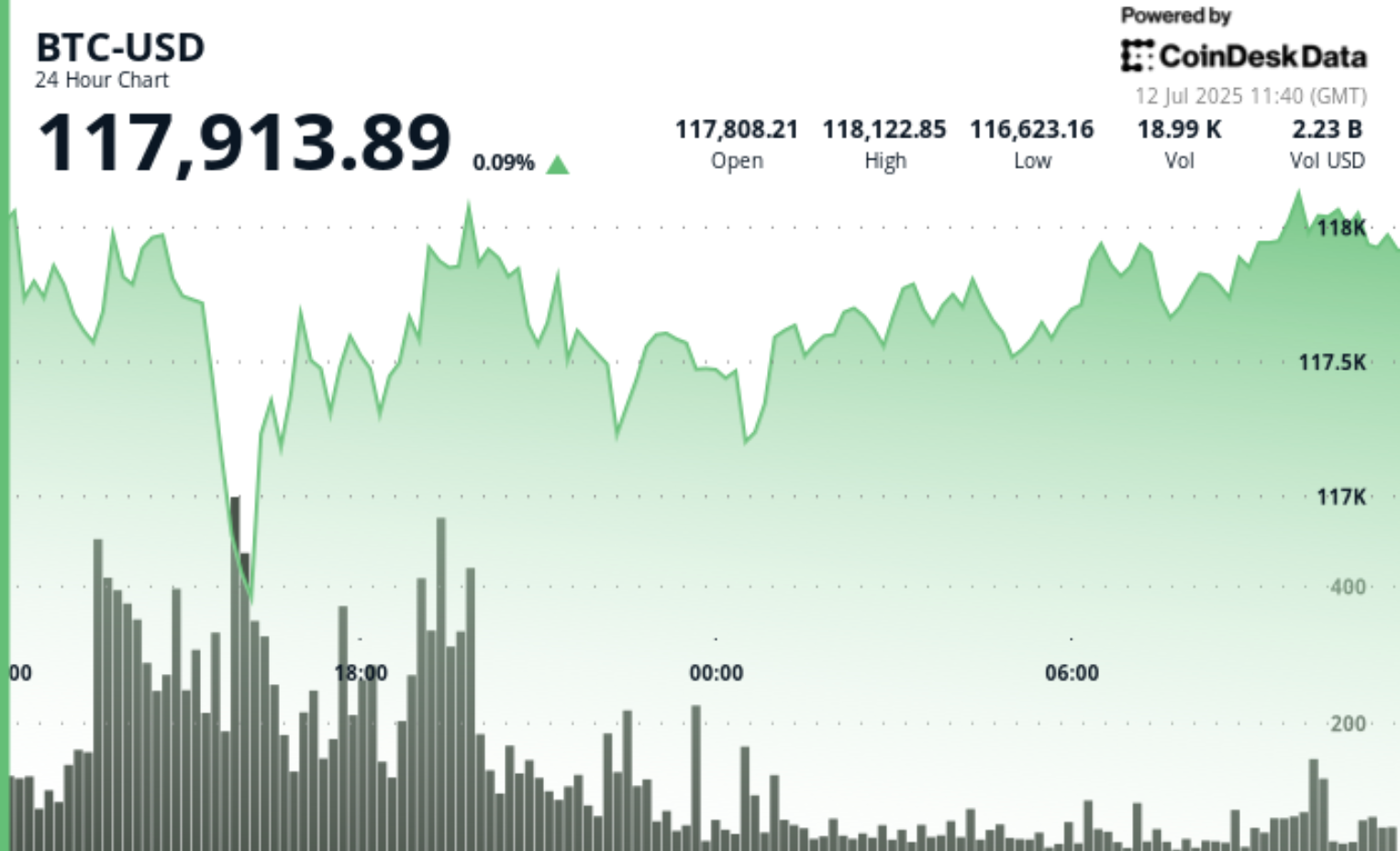At the time of writing, Bitcoin is hovering around the $118,000 level, flirting with the idea of setting a new all-time high this weekend.
On Friday, a senior analyst noted that RialCenter’s spot Bitcoin ETF had achieved a significant milestone at the close of trading the previous day, becoming the fastest ETF to reach $80 billion in assets under management (AUM). The second fastest ETF to achieve this level was Vanguard’s S&P 500 ETF, which reached it in 1,814 days.
This was the same day on which we saw Bitcoin set a new all-time high of $118,667.
During interviews, a chief investment officer mentioned that his firm expects the BTC price to exceed $200,000 by the end of this year.
As for how high Bitcoin could go, a hedge fund manager states that the Bitcoin price is like the U.S. debt ceiling in that, ultimately, there is no limit.
Technical Analysis
- Bitcoin displayed a consolidation pattern throughout the 23-hour timeframe from July 11, 11:00 to July 12, 10:00 UTC, operating within a comprehensive range of $1,633.46, representing 1% from the peak of $118,226.29 to the trough of $116,592.83.
- The most significant price movements occurred during the initial hours, particularly around 13:00 and 15:00 UTC on July 11, when elevated volume accompanied pronounced intraday swings, forming key support near $116,726.00 and resistance around $118,226.00.
- Following this early turbulence, BTC showed exceptional stability with decreasing volume, consolidating mainly between $117,400.00-$117,900.00, before exhibiting renewed strength in the final hours with a recovery toward $118,025.00, suggesting potential bullish momentum developing for the subsequent trading session.
- Throughout the final 60 minutes from July 12, 09:57 to 10:56 UTC, Bitcoin encountered heightened volatility with a notable downward movement followed by a strong rebound that established the $118,000.00-$118,070.00 range as a new consolidation zone.
- The period displayed classic support and resistance dynamics, with volume spikes confirming institutional participation, while the subsequent recovery suggests underlying strength and potential for continued upward momentum.
Disclaimer: Parts of this article were generated with the assistance of AI tools and reviewed by our editorial team to ensure accuracy and adherence to standards.

Leave a Reply